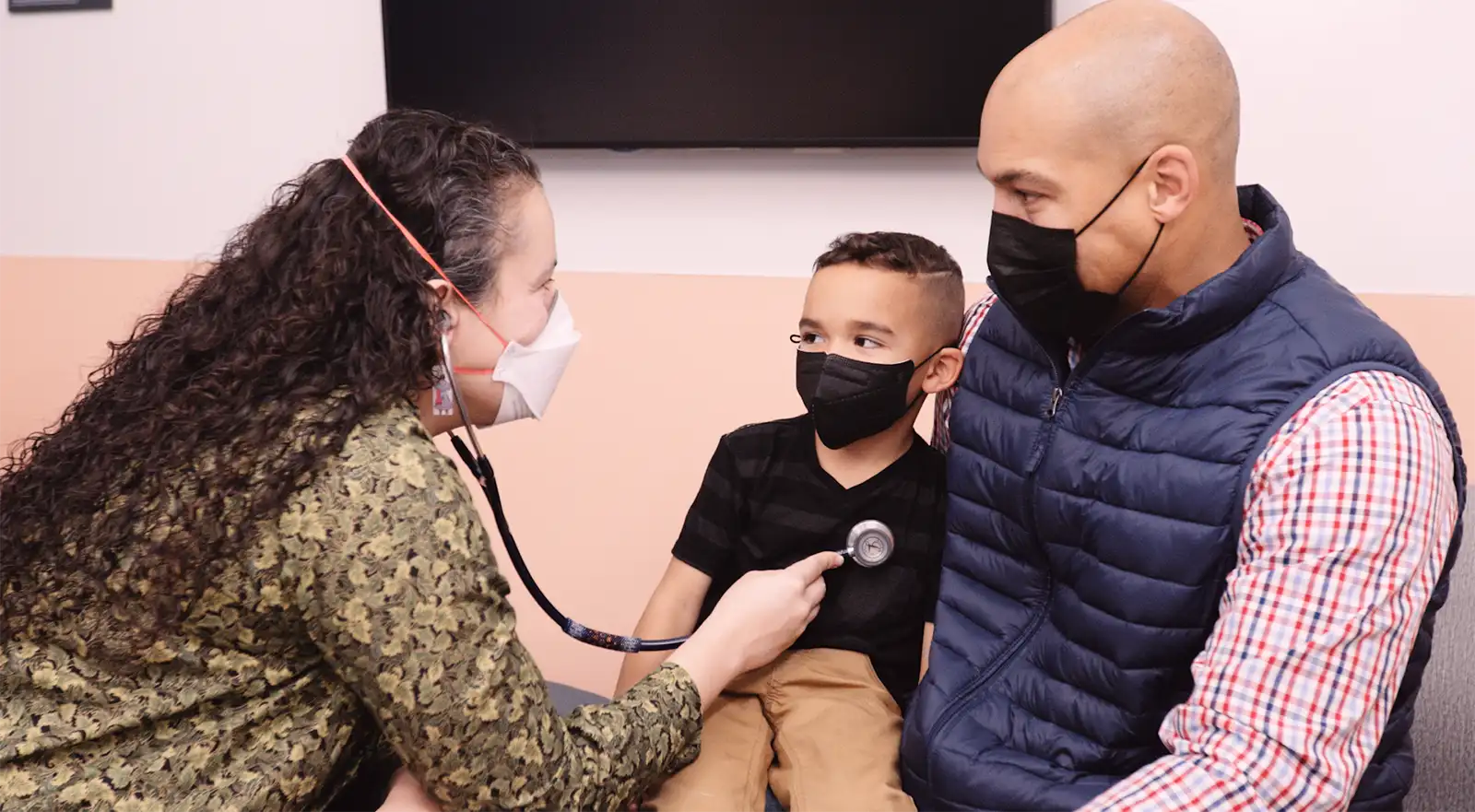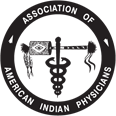
The art of medicine and wellness is woven into the fabric of the indigenous peoples of America. For thousands of years, American Indians and Alaska Natives (AI/AN) have been healing their communities with natural and effective methods that not only predate Western medicine but have also greatly contributed to its evolution. Native Americans chewed willow bark to soothe pain like we use aspirin today and even practiced the concept of vaccines, inoculating themselves against harmful substances by regularly ingesting small amounts of the substance to limit the impact of greater quantities on the body.
Unfortunately, AI/AN populations face the largest health disparities of any ethnic or racial group, a sobering statistic that became even more apparent in light of the COVID-19 pandemic. Because of factors like limited access to care, higher rates of chronic health conditions, and a persistent shortage of health care providers in their areas, AI/AN individuals who contract the COVID-19 virus are five times more likely to be hospitalized than White Americans, a number that is often still considered an underestimate. More generally, preventable diseases and health conditions are among the top ten leading causes of death among AI/AN communities.
The Role of Under-Representation Among AI/AN Doctors
One factor contributing to this care disparity is the lack of AI/AN doctors and medical care providers. When patients and doctors share the same race or ethnicity — especially among minority populations — the quality of care improves dramatically. Patients are more inclined to trust their physicians, as well as their treatment decisions, both of which lead to better outcomes in maintaining or regaining health and wellbeing. Time spent together and wait times for treatment are improved, as are screening options, patient understanding, and adherence to medication.
Native doctors in particular play a critical role in bridging the gap between western medicine and cultural beliefs, values, and practices. Not only are they experienced in addressing social factors endemic to AI/AN communities like homelessness and opioid abuse, but they are sensitive to indigenous culture and can better identify with patients. Moreover, Native doctors are 55% more likely than their non-native peers to serve Native communities so increasing the number of Native doctors can not only help alleviate shortages in physicians in rural areas, it can also improve the quality and cultural appropriateness of care.
However, the chances of an AI/AN community being served by an AI/AN physician are slim. According to the Association of American Medical Colleges, less than 10% of medical schools have more than four AI/AN students. While American Indians and Alaska Natives make up 3% of the U.S. population, they only account for less than 1% of the physician workforce.
Challenges to Health Careers Among AI/AN Communities
AI/AN students looking to pursue a career in the medical field face a multitude of cultural, historical, and social challenges, any of which would be daunting on their own but that are made more so by a compounding effect.
Legacy of distrust. AI/AN communities are less likely to seek medical care from non-Native providers for a number of reasons, from mistrust of physicians and hospitals and low satisfaction with care to lack of knowledge and health literacy and lack of cultural competency from providers. Collective histories and historical trauma of boarding schools also contribute to concerns about commercial exploitation from Western medicine and education systems, fractured family structures ill-equipped to support aspiring medical professionals, and the stunted transmission of cultural knowledge.
Early education. Native communities face disproportionately high dropout rates, exacerbated by social factors disproportionately affecting native and reservation populations like high rates of suicide, poverty, substandard housing, exposure to violence, and substance abuse disorders. Moreover, native students are not exposed to the same kinds of education as their non-native peers, particularly in the STEM fields (science, technology, engineering, and mathematics) required for success in medical school, and they are less likely to receive early encouragement to enter health professions.
Family dynamics. Many medical students are not only first-generation students, but they are also likely to be the first in their family to pursue a medical education and career away from home, stoking fears of physical and cultural separation in closely-knit families. Native families already skeptical of Western medical and educational practices are hesitant to send their children away, concerned that those who become doctors in particular will forget their cultural identity. Many families also struggle with the financial burden of supporting children through higher education, creating another obstacle for AI/AN students to pursuing and staying in medical school.
Personal experience. Without early access to quality healthcare and without any medical professionals who look like them, it can be difficult for young AI/AN students to see the value in healthcare. Not only have they never seen or been treated by a Native doctor, but they may not have access to doctors in their families, schools, or communities who can guide them.
Campus culture. From culturally insensitive logos and incidents of racism to simple lack of diversity and representation, life on college campuses can be a culture shock for young AI/AN students without the social support to buoy them. They may experience increased isolation and find little to no resources designed to help them succeed.
Professional reality. Once in the field, many AI/AN doctors who return to serve rural Native communities find themselves carrying more than they expected. AI/AN doctors often serve an entire community, adult and pediatric patients alike, and perform multiple duties as clinical directors, training supervisors, and emergency room managers. Moreover, doctors may only spend a few years on average in the rural, impoverished communities where care is needed most, but that may lack adequate schools or housing for their own families.
The Road Ahead for AI/AN Doctors
Central to advancing the presence of AI/AN doctors in the health professions is support from tribal and community leaders. In the 1970s, a tribal advisory board was established to recruit AI/AN students for medical programs and provide feedback on how to best support tribal community needs. Since then, the board has partnered with organizations and institutions to educate communities, working to demonstrate the multiplying effect of supporting just one AI/AN student and make the connection that health care professions don’t have to be incompatible with Native culture.
They also work toward the broader goal of building a public health workforce dedicated to treating and preventing the causes of health conditions in AI/AN communities, not just the illnesses, creating stability in Native and tribal communities with culturally aware physicians and providers they can trust.
Other entities advancing the efforts of AI/AN medical students and doctors include:
Universities
The University of North Dakota in particular has been a leader in improving AI/AN representation across the healthcare industry, recruiting, supporting, and training more than 250 AI/AN doctors since 1973. In 2019, the UND Public Health Program began offering an Indigenous Health Specialization as part of its Master of Public Health degree, and in 2020, it launched the country’s first Ph. D program in Indigenous Health. Today, nearly 10% of students in the medical school at UND are AI/AN.
In addition to hiring more NA faculty and maintaining inclusive institutions, colleges and universities like UND, the University of Wisconsin, and the University of Minnesota are working to create a sense of community on campuses by bringing together people from similar backgrounds while simultaneously expanding online, part-time, and full-time program offerings to accommodate students who can’t relocate or leave their jobs.
Indians Into Medicine Program (INMED)
Launched in 1973 by the University of North Dakota, INMED is one of the most successful indigenous medical training programs in the world, committed to creating and sustaining education pipelines that support AI/AN medical students along the path to their health professions. In addition to offering 5-year grants to public and nonprofit private colleges and universities to support the enrollment of AI/AN in public health curricula and health care career fields, INMED also provides students with the educational, financial, cultural, and social support they need to complete rigorous degree programs and develop necessary skills to promote and improve the health of native communities.
INMED supports students with:
- Travel grants for health conference expenses
- Assistance with financial aid applications
- Tutoring, career counseling, and scholarship resources
- Summer educational sessions
- A six-week Medical College Admission Test (MCAT) prep course
- Post-MCAT support to help students navigate the medical school application and admission processes
- Emergency loans
- Dedicated on-campus facilities with study areas, computers, and printers
INMED also provides outreach to middle and high school students to raise awareness of healthcare career opportunities through supplemental STEM courses and exposure to AI/AN health professionals.
Indian Health Service
The IHS scholarship program helps qualified AI/AN health professions students establish an educational foundation for each stage of their pre-professional careers. Recipients receive financial support in exchange for a minimum two-year service commitment within the Indian health program in their chosen professional discipline, at either IHS or back in their own Tribal communities. The program places AI/AN health care professionals in medically underserved Native health programs throughout the continental U.S. and Alaska.
The IHS Extern Program offers IHS scholarship recipients the opportunity to participate in hands-on instructive experiences and pre-professional training designed to complement the skills and knowledge acquired in their health profession program and familiarize them with health needs of Native communities. Externs are employed 30-120 workdays per calendar year during non-academic periods and receive either a salary based on experience and years of academic training or paid tuition and fees if the externship fulfills a required academic placement or internship.
AAIP and The Future of AI/AN Doctors
The COVID-19 pandemic has underscored the importance and impact of AI/AN doctors, especially in influencing and shaping preventative medicine like vaccine adoption in tribal and native communities. The COVID-19 vaccine—and vaccines more broadly—are crucial for ensuring the survival and preservation of native culture for future generations, and AI/AN populations are more willing to accept life-saving medical guidance from doctors and physicians who look like them.
The Association of American Indian Physicians (AAIP) is the oldest and most prominent non-profit physician organization committed to improving the health of American Indian and Alaska Native communities. In addition to providing program support for vaccinations and boosters, AAIP also supports AI/AN students in the pursuit of their healthcare careers. By motivating AI/AN students to remain in the academic pipeline and pursue and pursue careers in the health professions, AAIP is helping expand and improve the pool of qualified, culturally-appropriate doctors to meet the demand for today and tomorrow. To find out more about AAIP’s resources for AI/AN medical students and communities, including their vaccine programs for influenza, preventable childhood diseases, and COVID-19 and its variants, visit aaipvax.org.
